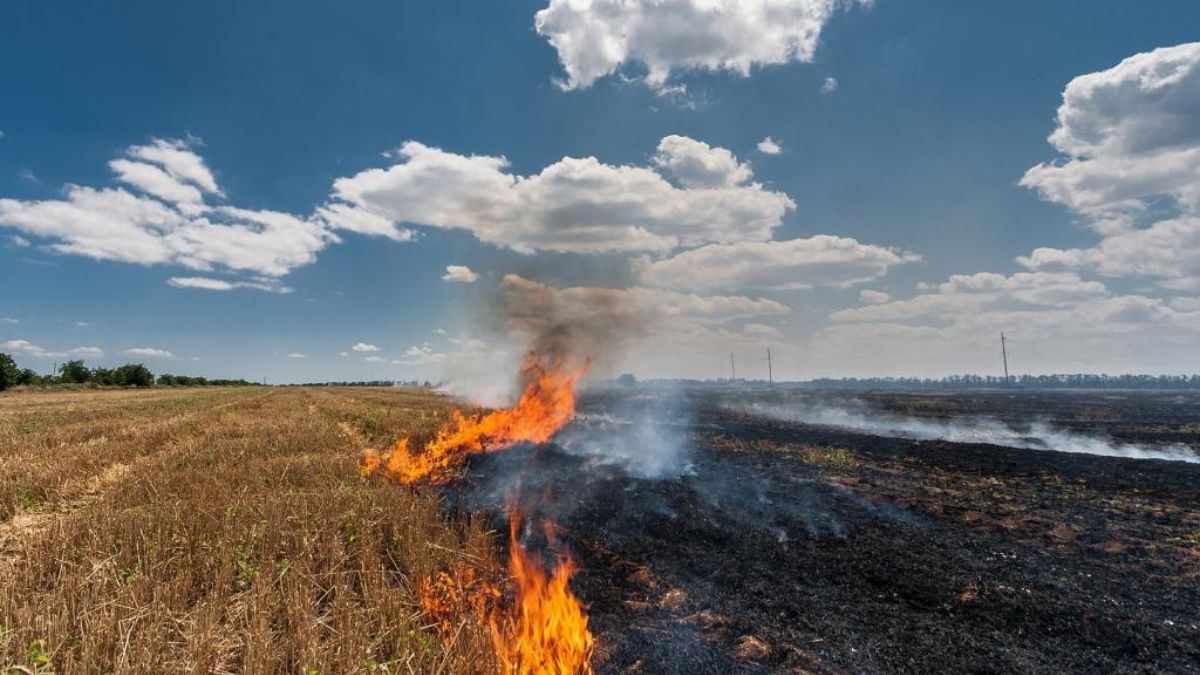Air Pollution in Delhi: The Burning Issue of Stubble Burning and Its Impact on Health
While various factors contribute to this problem, the burning of agricultural stubble in neighboring states, particularly Punjab and Haryana, stands out as a major culprit.

Advertisement
New Delhi : Delhi, the capital of India, has long been grappling with the severe issue of air pollution. While various factors contribute to this problem, the burning of agricultural stubble in neighboring states, particularly Punjab and Haryana, stands out as a major culprit.
This practice, commonly known as stubble burning, involves setting fire to leftover rice and wheat stalks after harvest, a cost-effective method for clearing fields for the next crop cycle. However, the smoke from these fires, laden with harmful pollutants, drifts across the region, blanketing Delhi in a toxic haze.
Stubble Burning: A Major Contributor to Delhi’s Air Pollution
Stubble burning is a significant source of particulate matter (PM), a type of air pollutant that includes tiny particles of dust, soot, and other harmful substances. These particles can penetrate deep into the lungs and cause various respiratory ailments. Studies have shown that during the stubble burning season, PM2.5 levels in Delhi can soar to several times the safe limits recommended by the World Health Organization (WHO).
Apart from PM, stubble burning also releases other hazardous pollutants, including carbon monoxide, nitrogen oxides, and volatile organic compounds (VOCs). These pollutants can cause a range of health problems, including respiratory infections, heart disease, and cancer.
Health Hazards of Air Pollution in Delhi
Exposure to air pollution in Delhi can have a devastating impact on human health. The city’s residents are at an increased risk of developing various health problems, including:
Respiratory infections: Air pollution can irritate the airways and make it easier for viruses and bacteria to enter the lungs. This can lead to respiratory infections such as bronchitis, pneumonia, and asthma.
Heart disease: Air pollution can damage the heart and blood vessels, increasing the risk of heart attacks, strokes, and other cardiovascular problems.
Cancer: Long-term exposure to air pollution has been linked to an increased risk of lung cancer and other types of cancer.
Other health problems: Air pollution can also cause a range of other health problems, including headaches, fatigue, dizziness, and skin irritation.
Preventive Measures to Combat Air Pollution
While addressing the issue of stubble burning at the source is crucial, there are also measures that can be taken to reduce the impact of air pollution on Delhi’s residents. These include:
Promoting alternative methods of stubble management: Encouraging farmers to adopt alternative methods of stubble management, such as mulching or using machinery to incorporate the stubble into the soil, can help reduce the reliance on stubble burning.
Enforcing stricter emission standards: Implementing stricter emission standards for vehicles and industries can help reduce the amount of air pollution caused by these sources.
Promoting public transportation: Encouraging the use of public transportation, cycling, and walking can help reduce the number of vehicles on the road, thereby lowering emissions.
Planting trees: Planting trees can help absorb harmful pollutants from the air and improve air quality.
Using air purifiers: Installing air purifiers in homes and offices can help filter out harmful pollutants from the air.
The issue of air pollution in Delhi is a complex one, with multiple factors contributing to the problem. Stubble burning, in particular, poses a significant challenge due to its seasonal nature and the difficulty in controlling it across multiple states. However, by implementing a combination of measures at both the source and the local level, it is possible to reduce the impact of air pollution and protect the health of Delhi’s residents.
Advertisement

